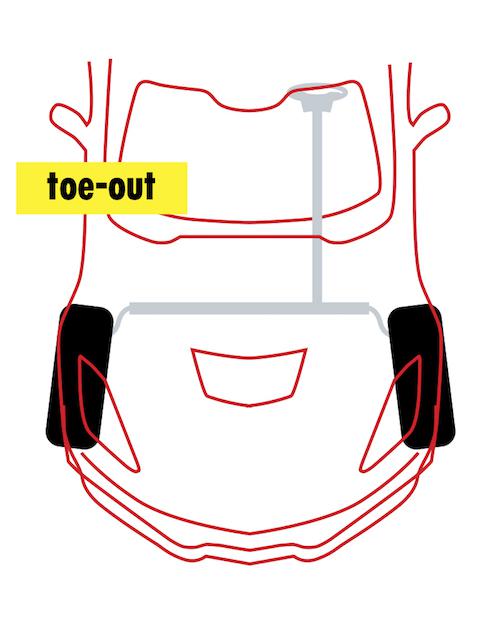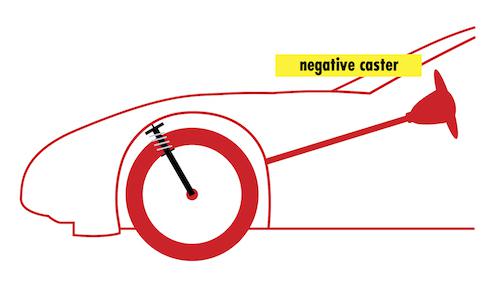Good work consolidating these into one concise article.


Photography Credit: Chris Tropea
What can separate a fast car from a really fast car? Power? Driver skill?
How about chassis setup? The way those adjustable bits and pieces are set up and aligned can often make a huge difference in lap times, driver confidence and even tire wear.
Where to start the process? How about with something that can be adjusted on any car: tire pressures.
But how do you determine what’s best–that is, fastest–for you and your car? A few possibilities: Take a wild guess, ask some randos on the internet, or–likely the proper answer–run some tests.
Andy Hollis, who does much of the tire testing found in these pages, uses a skidpad to determine hot tire pressures. Here’s how:
Where else can the chassis be dialed in while requiring little to no new equipment? How about the alignment? How your car’s wheels are pointed in terms of toe, camber and caster greatly impact handling.
This means, yes, possibly more testing.
First, you’ll need a venue, and here you’ll want to add in some transitions–think a small, simple autocross or a figure 8 that allows the car to reach about 60 mph.


Camber: The lean-in or lean-out of a car’s wheels when viewed from the front or rear.
Goal: On most production-based cars, maximum negative camber is the correct answer–and you may have to slot, tweak or replace something to get a little more negative camber than stock. If the outside edges of the tires are getting too hot and thus wearing too much, your alignment likely doesn’t have enough negative camber.


Toe: The relationship of the two wheels on the same axle when viewed from above.
Goal: A bit of toe-out up front can help with turn-in. Too much toe-out, though, can lead to instability, especially under braking.


Caster: The tilt of the steering pivot access from vertical when viewed from the side.
Goal: The stock caster settings are usually pretty good, but if you can, adding a bit more than stock can help with high-speed stability.
Is one end of your car gripping better than the other? If the front wheels are sliding before the rears, then you’re experiencing understeer. The circle track crowd calls this a push.
If the rear wheels are losing traction first, then it’s called oversteer. This is known as being loose in circle track parlance. Here are some ways to fix things:

What’s hot on today’s tire market? This guide should help you narrow the field, and you can dig deeper here.

Excellent article. Tire temps are important but also is full tire contact patch area using tire pressures and alignment.
My old method....using a tire grease chalk, scrub 3 lines across each tires tread face, 1/3 segments around the tire circumference, shoulder-to-shoulder, and using your steps, determine which pressure provides the best/most tire contact patch area. This will also provide a good indicator if your camber angles need adjustment for full contact patch area.
Because of vehicle weight distribution, the various radii of track turns, number of left/right turns, and inclination, you should not be surprised by variations of pressures and camber angles per wheel position.
Just sayin',
Not many people have a skid pad available. Can you just use a track for similar hot tire pressure testing?
latelifecrisis said:Not many people have a skid pad available. Can you just use a track for similar hot tire pressure testing?
Yes, but its not nearly as easy/effective.
If you are are using pace (lap times) as a metric you need a super-consistent driver and car combo, so that execution isn't also being tested.
If using pyro readings as a metric, there is a cooling off period from when you come off track to when you can measure. Further, there will be a varied amount of use of each corner depending on track layout.
The biggest challenge is to be certain that you aren't testing tire operating temp instead of pressure. Most 200tw tires, for example, will heat soak at least to some degree fairly quickly. So if you go out and do a couple of laps, come in change pressure and go out again, the tires are now in a different operating temp window and may perform differently.
That's the beauty of a skid pad: short laps, easy to drive at the limit, super consistent.
I am skeptical that toe-in at the rear decreases understeer and toe-out decreases oversteer. Consider the steering effect of the outside rear tire in the corner. Also, many new cars including Lotus, Toyota Camry, Honda Fit, BMW, etc. come with rear toe-in do you believe they intend to increase oversteer? C R Hammond
From Dixon, Tires, Suspension and Handling, 2nd Ed., p, 308: "A small static toe-in at the rear often has a surprisingly large effect on handling, increasiing understeer; front-wheel-drive vehicles, being lightly loaded at the rear and therefore having a large rear tire cornering stiffness coefficient, are especially sensitive to this." C R Hammond
This is one of the best documents I have ever seen for car setup tweaking. Great job pulling all this together in an easy to digest format. Need to print that out and keep it with the track clipboard for easy reference.
Displaying 1-9 of 9 commentsView all comments on the GRM forums
You'll need to log in to post.